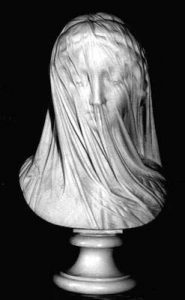Archival Moment
November 18, 1830
“The last relics of an interesting family, the original peoples of Newfoundland”

Photo Credit: The Rooms A-17-110-Shanawdithit
In the National Museum of Scotland, Edinburg the remains of two Beothuk people Demasduit and her husband — a chief named Nonosabusut — have been stored at the museum for years. The pair are the aunt and uncle of Shanawdithit, the last known member of the extinct Beothuk people, who died in St. John’s in 1829.
The remains were taken from a burial site in Newfoundland and shipped to the Royal College of Physicians, London for study, and later ended up at the museum in Edinburgh.
The remains of Demasduit and Nonosabusut were not the only Beothuk that found their way to Scotland for study.
On November 18, 1830 the scull and scalp of Shanawdithit (also known as Nancy and Nance April) the last known survivor of the Beothuk’s was sent to Scotland.
In a letter to the Private Secretary of the Governor of Newfoundland, Sir Thomas John Cochrane, the well know St. John’s physician, Dr. William Carson wrote:
“I send you for His Excellency the scull and scalp of Nancy Beothic inclosed in a tin case. I have put into the case a scroll, copy of which I have inclosed for His Excellency’s information.”
Dr. Carson continued in his letter to describe Shanawdithit:
“The skull and scalp of Nancy Beothic Red Indians Female, who died at Saint John’s, Newfoundland, June one thousand and eight hundred and twenty nine. At, twenty eight. She was tall, and majestic, wild, and tractable but characteristically proud and suspicious, cautious. “
He then continued to describe the Beothuk people:
“The Red Indians differed in appearance, language, and manners from the Esquimaux and Micmac Tribes, who inhabited the neighbouring shores of Labrador and Acadia. Many ascribed to them an European origin.”
Dr Carson was aware that the remains of Shanawdithit ‘s aunt and uncle, Demasduit and Nonosabusut had already been sent to England. He wrote:
“These the last relics of an interesting family the original peoples of Newfoundland are presented by the kindness of His Excellency Sir Thomas John Cochrane Governor, to the Royal College of Physicians…”
Shanawdithit’s remains were later sent the Royal College of Surgeons in London where it was destroyed by the bombings during the Second World War.
The rest of Shanawdithit’s body is believed to have been buried in St. John’s.
In 1997 a monument in her honor was erected, a life-sized bronze sculpture of Shanawdithit, created by Newfoundland artist Gerald Squires. The bronze image now stands in Boyd’s Cove near the remains of a site of one of the largest Beothuk communities found by archeologists to date, a lasting memorial to Shanawdithit, the last of the Beothuk people.
IN 2007, Shanawdithit, was honoured with a plaque recognizing her as a person of national historic significance. The plaque is in Bannerman Park, St. John’s.
Recommended Archival Collection: At the Rooms the Office of the Colonial Secretary GN2.2, the Office of the Colonial Secretary served as the official repository for Newfoundland state records and as the registry for varied legal and statistical documents, the collection includes extensive holdings relating to all aspects of Newfoundland political, economic, community and social life. The original letter written by Dr. William Carson can be found in GN2.2 1830 Volume 2 page 325
Recommended Archival Collection: Search the Rooms online database for descriptions of our archival records and view thousands of digital photographs. https://www.therooms.ca/collections-research/our-collections in the search bar type Beothuk.
Recommended Exhibit: From This Place: Our Lives on Land and Sea Level 4, The Husky Energy Gallery. Four Aboriginal Peoples—Innu, Inuit, Southern Inuit and Mi’kmaq—have lived in Labrador or on the island of Newfoundland for centuries. Europeans (livyers) settled both places beginning in the 1600s. This exhibition showcases how the province’s peoples connected and are connected, and how different cultures shape this place.









